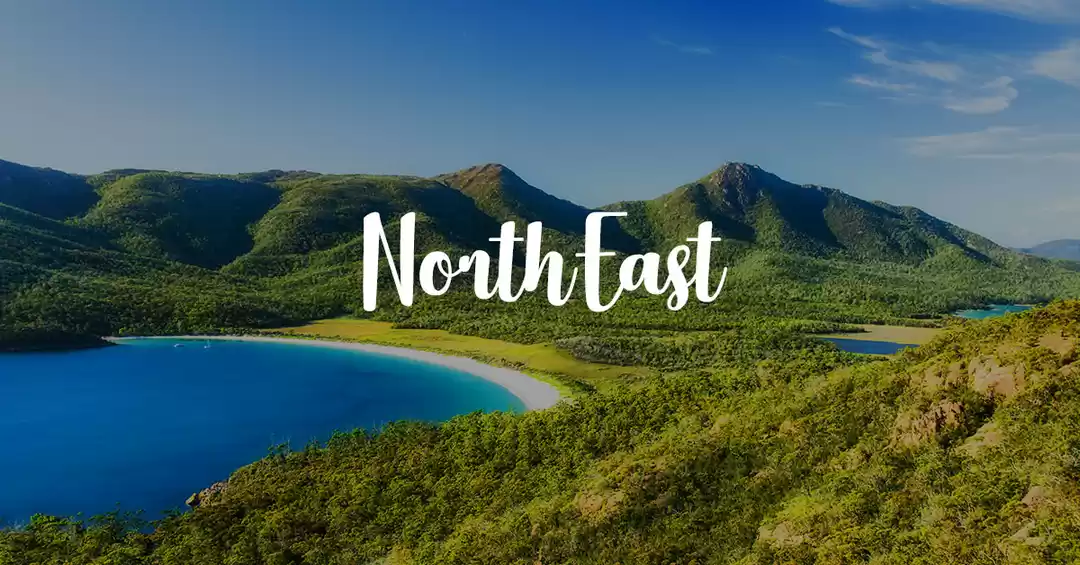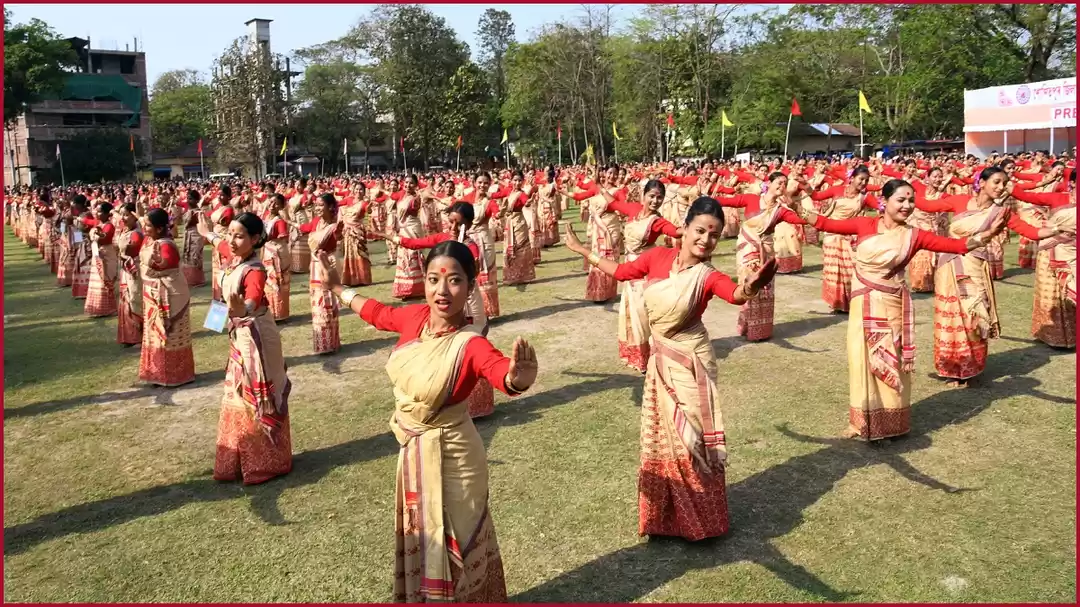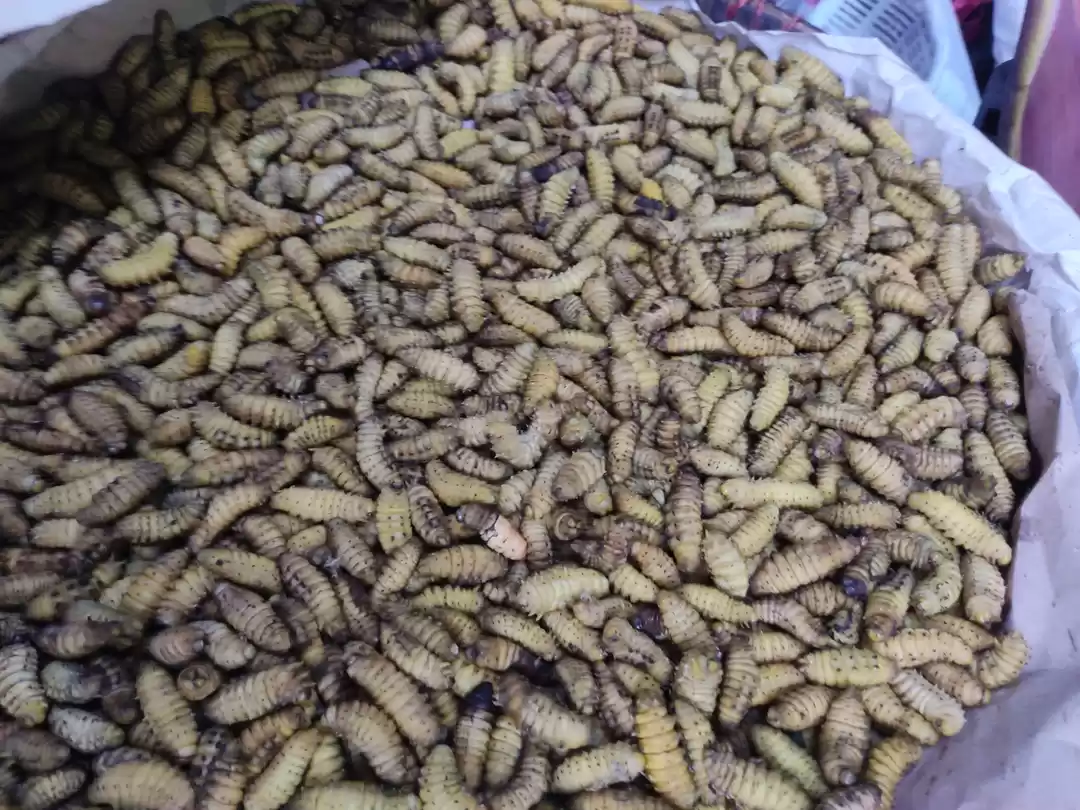Nagaland's Hornbill fest & Upper Assam
Contd from Imphal> Kohima- Kisama- Kohima- Khonoma- Tuophema- Kohima- Dimapur- Jorhat- Sibsagar- Dibrugarh
(Read in continuation with the previous post on Manipur- the jeweled land)
Day 5:
From the dustry roads of Senapati district of Manipur, after crossing Manipuri towns of Maram and Mao, our bus finally entered the first Naga town called Khuzama. I thought there would be strict checking for inner line permits at Mao and Khuzama but police at both the check posts looked least bothered.
After Khuzama we crossed Viswema, Jakhama, Kigwema, Kisama and Phesama- and then finally entered the Kohima town. (Imphal-Kohima bus ticket cost approx 400 rs in Dec2012)
I got off with my heavy trekking backpack at Mohonkhola point and reached 'Imchen guest house' at New Minister's Hill where i had prebooked a room for me for 3 days (just a 2 minutes steep walking distance from Mohonkhola traffic point on NH39)
Aunty who runs this guesthouse (along with her husband and her son who is an animator from Delhi) greeted me at the entrance and welcomed me in Kohima. She handed me over the keys of my room on ground floor and told me to disturb her upstairs whenever I need anything.
The 'room' which was actually a one room set had a lobby cum dining with attached toilet and a spacious bedroom with 2 single beds, wardrobe and dressing tables.
After freshening up, I went upstairs to talk to aunty as I had no one in Kohima who i could meet and talk to. Aunty was cooking pork in traditional way with bamboo shoot in traditional Ao style (Ao is a subtribe of Nagas belonging to the Mokokchung district of Nagaland) in what looked like a furnace similar to a fireplace.
After chitchatting with aunty about my Manipur tour and my plans for next 4 days in Nagaland, i went back to my room for some facebooking (My tata photon worked really well even in this corner of the country which i had never expected). By 6 pm aunty sent me dinner (in the picture) to my room. A lot of rice, Dal, Pork with bamboo shoot, Potato subzi (specially made for me as i was unsure about being able to eat pork), salad of cabbage and local fruit veggies and mango pickle. (5:30 -6 pm is the normal time to have dinner in Nagaland because in this easternmost part of India, sun sets as early as 5pm in summers and around 4pm in winters.)
After having the sumptuous dinner, I went back to facebooking and ended up sleeping at 8pm- I think the earliest I have ever slept!
Day 6:
Woke up early in the morning, had breakfast of egg- bread and tea sent by aunty and left for Kisama (yess I skipped bath as it was impossible for a Mumbaiite like me to have bath in 3 degree temperature with ice cold water on such a chilly morning in Kohima). I walked down till Mohonkhola point taxi stand and enquired how much would it charge me if i hire the taxi for Kisama. 300 was the shockingly high fixed price set by the taxi Union here during Hornbill festival. Absolute looting! Anyway having no other option, I hired the taxi to reach Kisama heritage village only around 9 km away from where I was staying- a distance for which one would have to pay barely 50 rs in Mumbai!
As I entered Kisama's complex, i could see Naga performers wearing colorful clothes, head gears and varied metallic jewelry- walking here n there getting ready for the cultural extravaganza that was to start any moment from now.

While the organizers were checking their set up one last time before the festival's inauguration, all professionals and amateurs (including me) were busy clicking the Nagas of different subcastes in their colourful traditional attires. The amphitheatre at Kisama was now jam packed with foreigners (especially Americans, Germans, Japanese and the Koreans) and Indians (mainly Biharis, Bengalis and Marathis other than the families of Indian army jawans posted in Nagaland)

First two rows of amphitheatre reserved for the performers also started filling fast. Only later i learnt that every tribe is given a fixed position to sit in amphitheatre. From the colourful Phoms and beautiful Chakesangs to raw Khiamnuingans and fierce Konyaks, by now everyone had started gathering in the already crowded arena. (All these are the subtribes of Nagas)
Then came chief minister Nephiue Rio and Governor Nikhil Kumar along with other VIPs and occupied the VIP stand. After the formal speech by both and blessing speech by really old Konyak Angh (which noone understood as he spoke in Konyak language), CM and Governor hit the gong and announced the Hornbill festival 2012 on.

After beating the naga drum, surprisingly the first act of this year's hornbill was a Meitei (Manipuri Hindu) - the community with which Nagas have ongoing tensions in Manipur.
After the unity dance of all the tribes of Nagas, a students band from Tuensang came in and took over the arena with the mighty sounds of bagpipes and the drums.
After the main cultural performances for the day were over, a piglet catching competition was announced for the young males of each tribe of Nagas. A shaved smooth agile piglet completely covered with lotsss of oil was left in the middle of the arena for the teams to catch. The winner would obviously get to take away the piglet for the feast!.. Everyone tried their hard, but piglet still managed to slip off and run away.. Only after a funny drama of 10 minutes someone managed to grab the little piggy and it was all over.


Next was the Naga King chilly eating competition- in two categories- for locals and the travelers. First started the locals- some former winners and some excited newbies. Each person was given loads of red and green king chillies in a bowl and milk powder in another bowl. They were all set to claim the hefty amount of 25000 indian rupees. (Funnily, the contestants were made to sign a form before the competition saying the organizers and the govt. isn't responsible for whatever happens to the people after eating the chillies :O). In a while the experienced contestants started eating chillies like they were eating Gulab jamuns. A guy who managed to eat some 16 chillies in the given time won the competition.

Next was the turn of the enthusiastic travelers. The contestants included a British lady, an Australian gentleman, an MP from Burma. The MP from Burma fainted with two chillies down his stomach and was carried backstage for some serious medical help. Finally the lady who managed to eat some 8 chillies won the competition and then the official program for the day was concluded. Now was the time to walk uphill and visit the Morungs of each tribe created on the slope of Kisama hill- hog onto some traditional Naga food and rice beer and visit the exhibition stalls.
The handicrafts and handlooms put up for sale in the exhibition pavilion was nothing like I had never seen. I have always been a big fan of the artists here and have been a regular at the Northeast expos that are held in Mumbai every year. The stuff here looked rather overpriced, But then thats ok as this is the only time they get to earn directly from the travelers anyway.

Uphill, all the tribesmen of each tribe were dancing and singing their traditional songs in front of their Morung. Excited travelers like me were busy catching exotic looking dancers of each tribe and make them pose with us for photographs. :D


After having the amazing rice beer in the bamboo mugs and making sure that I had posed with all the tribesmen (:P), I decided to head back to my room.



A 50 rupee share cab ride got me to Mohonkhola where i was staying. I decided to have an early dinner :/ and keep myself free for the later evening for a stroll around the hilly capital town. Today aunty specially prepared yummy chicken for me. The awesome chicken curry, roasted dry masala chicken, plentiful dal-rice and aloo subzy totally made my day! Buurpppppppp!!!
As a part of Hornbill festival, tourism dept had arranged different programs at different venues throughout the city. Evening plays in Kisama, rock concerts in Indira Gandhi stadium and night bazar in Kohima's main bus stand area. Being not much interested in plays and IG stadium being really reallly far to access at night without own hired vehicle (almost 10 km from where i was staying and completely disconnected from the city and inaccessible at night. Taxis would almost charge 1000 to 1200 for a return journey at night. Local govt transport is nonexistent in Kohima), I decided to head to the night bazar at a distance of 2km winding walk.
By now it was 6:30 and pitch dark, I started my walk- crossed main landmarks of Kohima like police headquarters and world war II cemetery and reached my destination in half an hour. For ones Kohimaiites looked very excited that their their city which is usually dead after 5 PM, seemed so lively and lit up today- at least this part of the city.

Night bazar got really crowded with locals, tourists and vendors by 8 o clock. Apart from the handicraft and other shops, a lot of locals had put up their food stalls on the street. Most were offering traditional food at reasonable price while some were selling local version of chats on the streets. Chicken and beef items were the most common and most in demand too. While walking by, I stopped at a very interesting stall which was selling fusion salads and innovative fruit salads. I couldn't stop myself from buying this pineapple riot- a yummy salad made of pineapple pieces, pomegranates, and other fruit pieces mixed in cream and sugar syrup. A total Paise Wasool!!
Aah...Had sucha tiring day. Walked back 2 km to my room from the bazaar and slept off for the day! (oh yeah; after taking a wrong route on the way while the electricity in the town was gone. Walking on the road at this time is unusual to Kohimaiites- hence there was no one even close on the roads- max a vehicle or two crossing by. Well but Kohima looked pretty safe at nights. Any way I figured out my correct route and reached back safely.)
Day 7:
Day 7 started much like the earlier day. A chilly morning and unbearable cold (but i had my bath today :/) and I caught taxi for Kisama. Today's theme for the performances was- 'the northeast unity'. As the name suggests, a troupe each from few other seven sister states came in and performed their tribal dance. First came in the Lushais of Mizoram and performed their world famous Bamboo dance. Then followed the Kom tribals of Manipur. Shortly after came the Bodo women from Assam and performed their traditional Bagurumba dance. Tripuris danced on their traditional dance and at the end of it all the tribes again joined back and formed a circle and Manipuri meitei men performed Pung Cholom at the centre. Pung cholom that had by now become the most favorite dance of people here got huge applause and whistles! Only thing that Nagas had to do today was to sit quietly and see their brothers from other mothers perform.

Today my friend from Mumbai was supposed to join me for the rest of the trip. Earlier this day he landed at the Dimapur airport and was on his way to Kisama and about to reach anytime soon.
As my friend arrived at Kisama, I took him around the Morungs and guided him like I was the boss there. Straightaway took him to the morung of Khiamuingan tribe. (By now I had sipped rice beer in all the morungs and the Khiamuingans' beer tasted the best :D)

My excited friend also posed for the pictures with the tribals. We just cant stop being Indians can we? :D
To my friend's luck, the performances from the other states started again for the tourists who came in late and missed morning's performances.
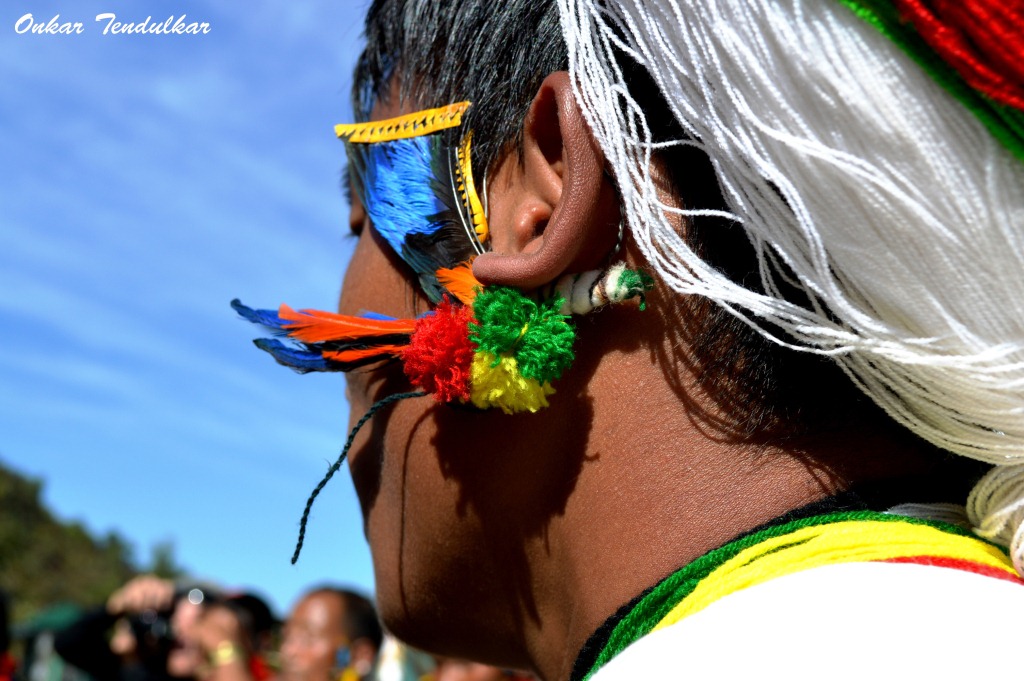
After the re-performances, we decided to head back to the room. Before heading back we dropped in at the horticulture exhibition cum competition held in another open ground at Kisama.
Prizes were up for grab for many categories like 'best orchids' 'best vegetable hybrid' 'best raja mircha' etc. Some of the vegetable hybrids looked so innovative. And the flowers--- too good to be real!



Another important thing before leaving was to approach the govt. travel guides' stall at the Hornbill venue and book for a taxi for tomorrow to show us around in Kohima and other famous ancient Naga villages of- Khonoma and Tuophema. This govt. guide offered us a cab for 2000 rs. for these places including the driver and the fuel- much cheaper than what the other normal cabbies were asking for. During Hornbill festival, everyone here is up for the looting! Its very important to know whom to approach at such times else your money just won't stop flowing out. of your pocket.
A short stroll in the night bazaar and we were back to room for dinner.
Day 8:
Early today we first headed to Khonoma- the most ancient Angami naga village known. It took us about an hour to get there. These ancient villages are not really exciting tourist spots but just of the heritage importance. The typical naga gates and interiors of traditional Angami houses here are well maintained.

Thanks to our driver who was an Angami naga, a local family who had preserved the traditional interiors, invited us to see it and take pictures.

A few steps ahead is the Khonoma fort- of which only a gate remains today. Different timelines of repeated constructions- destruction and various battles are mentioned in front of the gate. A note at the gate claims that this fort was the venue of the fiercest battles ever between British and Nagas in 1850-79. It also claims that a British Major described this as the strongest fort in Northeast India.

On the way out are two interesting sites- the commemorative monument of General Mowu Gwizantsu- ex commander in chief of Naga army and resting place of Khrisanisa Seyie- so called first president of Federal Naga Army (which runs a namesake parallel government in Nagaland claiming that Nagas are not Indians and Nagaland isn't a part of Indian Union.) Our driver told us that the Naga youth now has started moving in to cities like Delhi and Mumbai and have understood the importance of being one nation and that people have started moving away from separatist movements like Federal Naga Army.
The next stop- Tuophema tourist village is at the exactly opposite corner of Khonoma village and its route goes via Kohima city. Hence we first decided to have lunch somewhere in Kohima, then visit the state museum in Kohima, and then head to Tuophema.
Having no good choices of restaurants in Kohima, we decided to have traditional naga rice and pork for lunch at one of the roadside eatery in the market and then headed to the state museum.
Like every other state museum in North east, even this museum had separate galleries for head gears, jewelry, life sized statues of tribals and models of their huts.
Out of all the sculptures, the sculptures made by Konyak tribes seemed creepy and interesting- like the chair made of bone and the black hunting basket made of clay.
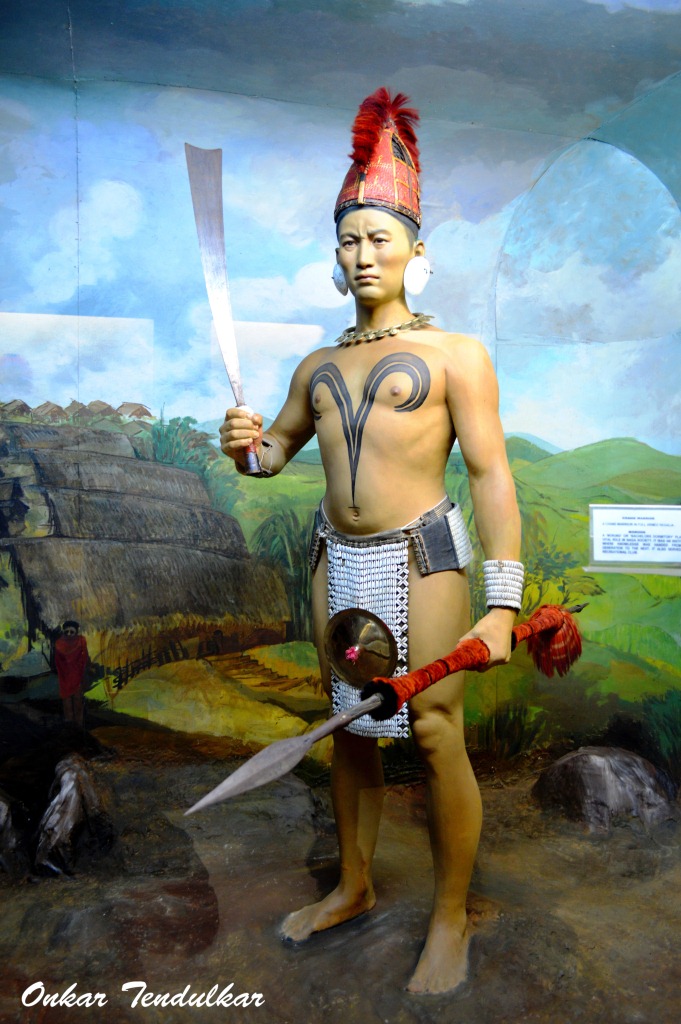
The museum also has an outdoor gallery which mainly houses the sculptures and carvings done by different tribes made of stone.

After the museum, we headed to Tuophema. Halfway to Tuophema comes this village called Nerhema- which has a grave of a Naga Captain of Rajputana rifles of Indian army- Cap. Neikezakuo Kenguruse who died in 1999 in Kargil war against Pakistan.

Tuophema village was much different than Khonoma village for the basic reason that Khonoma was a living museum. People stayed there and there was nothing artificial about it, but Tuophema which is also the village of Nephieu Rio- the naga chief minister is a tourist village- created keeping the tourists in mind. Ofcourse Tuophema has its old settlements too but the main attraction here are the cottages and museum created for tourists to visit.
The cottages here are given to tourists at the rate of 1500 per night (2012 rates). These cottages are self sufficient- they have a small fireplace, a small kitchen counter, bedroom and toilet. At the backside of the cottages, there is a huge community kitchen which prepares food for tourists in traditional cooking style.

The tourist village also has a coffee shop, a ground for Sekerenyie festival of Angamis and a museum which houses antiques and artifacts.


The elephant skull and chairs made of elephant bones in the museum are a must see.
Day 9:
Today was our last day in Nagaland. Later in the afternoon we were supposed to move to Dimapur and catch a train Jorhat in Assam for night stay and leave for Sibsagar the next day.
Before heading to Kisama today, we walked uphill on the Aradura hill to visit the Kohima cathedral. The majestic tensile and shell structure always impressed me every time I saw its picture online earlier- and its grandeur totally lived up to my expectations.


As per our routine, we headed to Kisama- today to have a look at Naga wrestling competition.

After saying a final goodbye and clicking more pictures with the tribals we went to the World War II cemetery in Kohima. Batlles at Kohima and Imphal are still considered to be the greatest battles British had to face during the world war 2.

After saying goodbye to aunty and checking out, we went to the Dimapur Taxi stand in the main market of Kohima. Journey to Dimapur costed us approx 300 per person.
Journey to Dimapur is full of winding roads- so curvy that we had to stop twice for our co-traveler to puke. I wouldn't claim to have taken the journey properly either- the dizziness and the pukish feeling remained all evening. Only good thing on the Kohima- Dimapur highway is the awesome Pineapple plantation on both sides of road.
We reached Dimapur railway station time and our Jorhat bound train was expected in another hour. (Dimapur is the only railway station and the only airport in Nagaland.)
A decent train journey of about 5 hours got us to Mariani Junction in Jorhat, Assam. My 4th time in Assam- the state I've grown so used to! :) We reached an area near bus stand which has plentiful hotels- got into one of them and slept for the day.
Day 10:
Poor planning of the last few days of the tour made us regret that we couldn't go to beautiful places like Majuli island or Kaziranga even though we were so close to them. Pre booked flight tickets from Dibrugarh didn't allow us any flexibility in the plan and we had to head to Sibsagar as decided earlier.
A hundred bucks share tempo ride for approx two hours got us to this small little city of Sibsagar. Sibsagar is one of those places that has a strong aura of its own. Sibsagar's life seems to be governed by the mighty Shiva dol temple and the Sibsagar lake- on the banks of which it lies.

After so much of a difficulty in finding a decent hotel, we managed to get a room in the government circuit house with the help of an acquaintance of my friend. Circuit house is just a five minutes walk away from the main temples on the banks of the lake itself.
Post freshening up, we visited the Shiva dol, Devi dol and Vishnu dol and went for dinner in the close by Brahmaputra restaurant at the corner of temple road- a very good and clean restaurant for a small city like Sibsagar.
After the dinner we went to the market looking for a taxi for next day. Finding what you want even in the smallest cities of Assam has never been a problem. Friendly people and their understanding of Hindi makes it much more accessible than rest of the NE states.
Day 11:
First place in the morning was Garhgaon- famous for Ahom kings palace- Karenghar.

(Courtesy: Wikipedia: Garhgaon was the capital of the Ahom kingdom for many years. It was built by the Ahom king Suklenmung in 1540. It lies 13 km east of present-day Sibsagar town. The palace structures were made of wood and stones. In 1747 Pramatta Singha, son of Rudra Singha, constructed the brick wall of about 5 km in length surrounding the Garhgaon Palace and the masonry gate leading to it. The old palace was destroyed and the present seven storied palace was rebuilt around 1752 by Rajeswar Singha)
From Garhgaon, we went further ahead to Charaideo Maidams (30 km from Sibsagar town)- the burrial places of Ahom kings and queens. Charaideo was also the first ever Ahom capital. It almost lies at the border of Nagaland. This area has almost 150 hillock tombs but only around 30 are protected by ASI.

After seeing the vast complex of Charaideo and surrounding tea gardens, we headed back to Sibsagar town for lunch.
Post lunch we visited Sibsagar's Shiva and Devi temples again in day light and then went to Rangpur- few kiometers from Sibsagar- which houses the most celebrated Ahom monuments i.e. Talatal ghar and Rang ghar- the Ahom amphitheatre.

Talatal ghar is the grandest and largest example of Ahom architecture. It is a palace that was earlier used as military base. With three underground floors (Talatal ghar) and four above ground floors (Karen ghar) even though only upper floors can be accessed now. This structure is also said to have two secret tunnels.
Later, we went to closeby Joysagar lake- which like all other lakes in Sibsagar has same setting- a squarish tank and Shiva, devi and Vishnu dol on its bank.

Rang ghar- the two storied royal entertainment house is only a few minutes away from Joysagar and Talatal ghar. This structure served as the sports pavilion for royal spectators during festivals.
It was constructed during 1744-50 by king Pramatta Singha and is supposed to be one of the oldest surviving amphitheaters in Asia.
Post Rang ghar, the same cabbie was supposed to drop us to Dibrugarh around 82 km away for our flight back home next day.
Day 12:
Morning flight back to Delhi!
Frequent Searches Leading To This Page:-
hornbill festival nagaland, hornbill festival begins in nagaland, when is the hornbill festival in nagaland, hornbill festival assam, nagaland to assam distance





